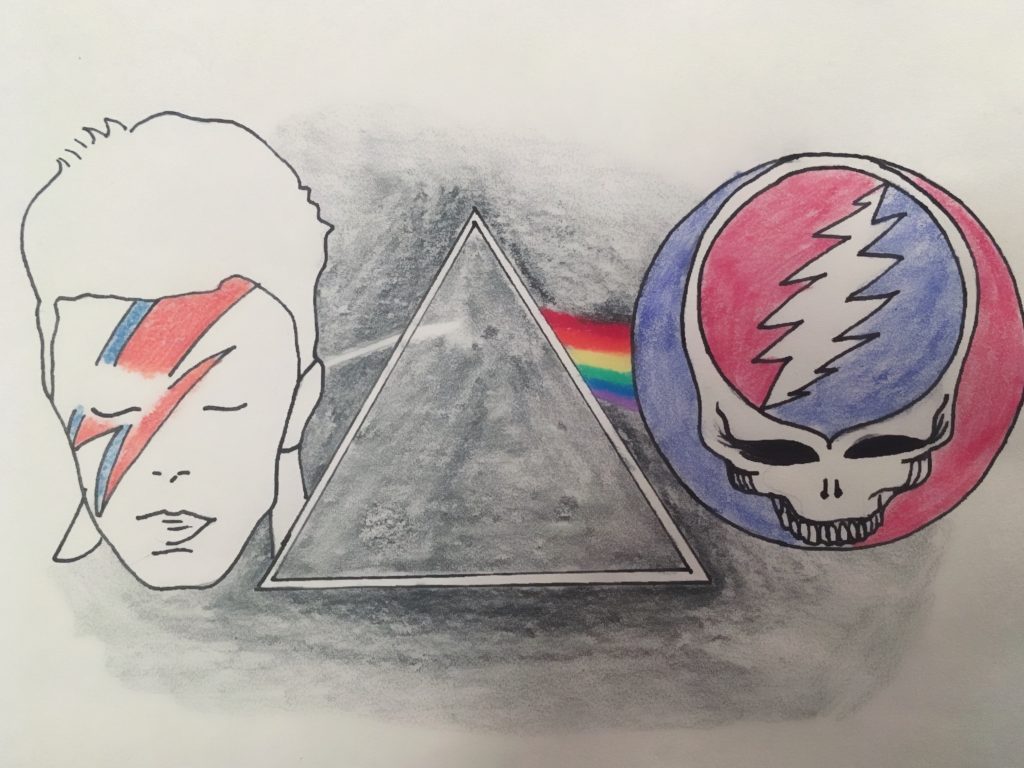“Rock and roll is dead.” “Punk is dead.” “Hip-hop is dead.” We’ve all heard it. Different veins of autonomy and energy represented through movements in music seem to have lost their relevance in the mainstream. It’s hard to disagree when someone puts it that way, but it’s easy to say that it isn’t that simple. While platforms like Bandcamp have given artists a simple way to release music, it seems that the artists who still utilize older musical styles rarely escape total obscurity. In today’s music world, many aspiring musicians settle for playing what they know will sell rather than what they want to play.
Self-destructive commercialization can be considered the death of classic rock, although you cannot appreciate these eras in music for what they are if you don’t understand why they need to continue to change. Music is constantly changing, and even in the midst of this transition, classic rock remains relevant.
Rock and roll marked the beginning of what many adults considered “risque music.” Inspired by several different elements, in the late 30’s to the late 40’s, artists began to add new features to their music and evolve it into what is now referred to as rock. In the late 50’s, rock and roll had gained substantial momentum and had evolved into a trend. Pat Hare’s distorted power chords, Bo Diddley’s hypnotic grooves, and of course, the unprecedented energy brought to the genre by Chuck Berry introduced a new era for a new genre.
Rock and roll embodied the rebellious spirit of the 1950’s youth. Learning from its forefathers and condemning of its shortcomings, the music was instantly recognizable for its energy and style. Reaching for what would come in the next decade, a feeling of defiance was reflected in the relentless pianos, the warm sustain of the distortion, and the affinity for an open canvas of a drumbeat that would echo under the eras that followed. With energy and creativity strong enough to subvert and disrupt the American culture, rock and roll was the perfect music for the counterculture movement.
The counterculture movement was a catalyst for more passion, more defiance, and more music. The British Invasion fostered support for this growth and the creativity that came with it. Psychedelic drugs became an influence on many artists who wished to better express the things they felt but could not put into words. The effects they commonly relied on (reverse reverb, tremolo, syncopated delay) quickly found their place in the rock and roll sound. Woodstock ‘69 brought it all together. Jimi Hendrix’s haunting performance of the national anthem is still remembered today for the unsettling screams of his guitar. It was the voice of the youth, and that voice was speaking out.
It’s safe to say that in America, we perceive it as normal for teenagers to have rebellious stages. While the punk scenes have begun to die away and while the gems of hip-hop are increasingly hidden behind a mumble, rap and trap beats, the classic rock we all know of and love, still remains prevalent. Rock and roll is about movement, energy, and change. It lives on through both its purists and its offshoots. As long as young musicians continue to develop their creative abilities as it comes naturally, rock and roll will never die.
Samantha Nadel
staff writer
Graphic: Maraea Garcia

